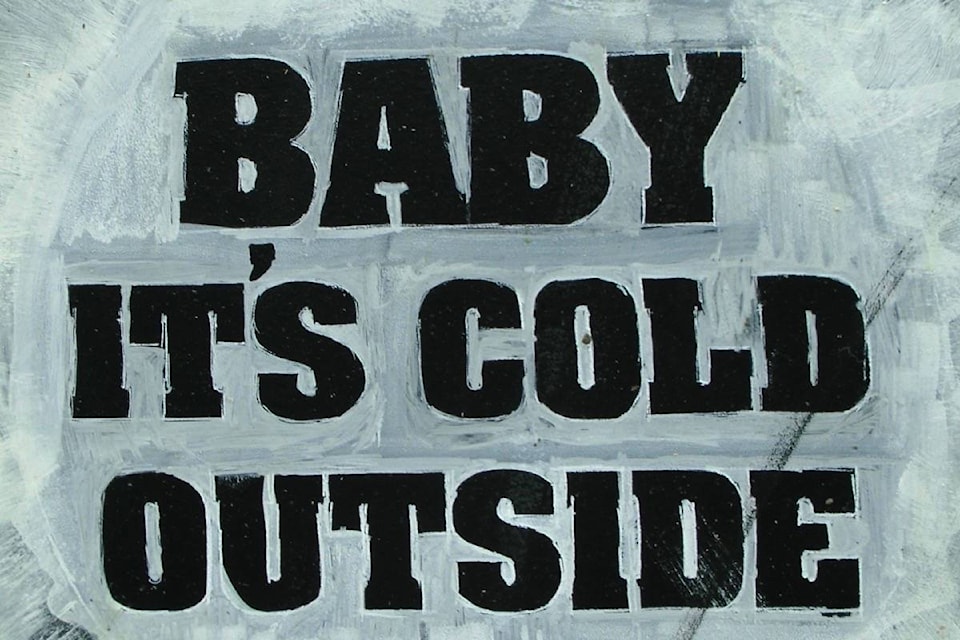Have you noticed that Radio NL in Kamloops is playing nothing but Christmas music between now and December 25? I certainly have.
How do you feel about this? I have a pretty high tolerance for Christmas music, so I should be good; but ask me again on December 25. They kicked off just after midnight on December 1 with Vince Guaraldi’s “Linus and Lucy” from A Charlie Brown Christmas, which was a solid start.
I heard a song on there the other day that kind of bothered me, especially with all this sexual harassment stuff going on. Let me guess: “Baby, It’s Cold Outside”.
How did you know? Considering that some people refer to it as “the date rape song”, it wasn’t too difficult.
So: is it a date rape song? Its composer, Frank Loesser, would probably say no; he wrote it in 1944 as a duet for him and his wife, Lynn Garland, and it was phenomenally popular.
What about you? Hang on, let’s give a brief synopsis for those who don’t know the song. In it, a man has invited a woman back to his house after a date. He’s obviously attracted to her, and would like her to stay for the night, and keeps coming up with reasons why she shouldn’t go (the weather is bad, the snow is deep, there are no cabs, etc.), while she gives all the reasons why she should (her parents will worry, her sister will be suspicious, people will talk, etc.).
So what do you think? No, it’s not a date rape song.
But he keeps refusing to take no for an answer! And she keeps refusing to go. Look, he hasn’t bolted the door; she can leave anytime she wants, and chooses not to.
What about when she asks “Say, what’s in this drink?” Sounds like he’s put something in there. Apart from the fact that date rape drugs weren’t a thing in 1944, to me it sounds more like the drink is stronger than she expected. Also, at the time, blaming the strength of one’s drink when one was about to do something that might be frowned on was pretty common, especially for women.
What do you mean? He’s obviously attracted to her, and would like her to stay the night (hint: he doesn’t want to play gin rummy). The fact that she doesn’t leave means she’s attracted to him as well, and would like to stay the night (again, not to play card games). To me, the crucial lines are when she says “I ought to say no, no, sir / At least I’m gonna say that I tried.” She knows what she wants, and also knows that in the society in which she lives (America in 1944), an unmarried woman who not only admitted to being sexually attracted to a man, but also acted on that feeling, would face a good deal of condemnation. So to me, the song is really about a woman deciding what she wants and then deciding to go for it, even though she’ll face criticism.
Wow. That’s certainly an interesting take. To me it’s a fun, flirty song that needs to be looked at in the context of when it was written and what social mores of the time were.
Thanks for that. Next week, can we discuss the consumerism implied in “The Twelve Days of Christmas”? Let’s not and say we did.
editorial@accjournal.ca
Like us on Facebook and follow us on Twitter
